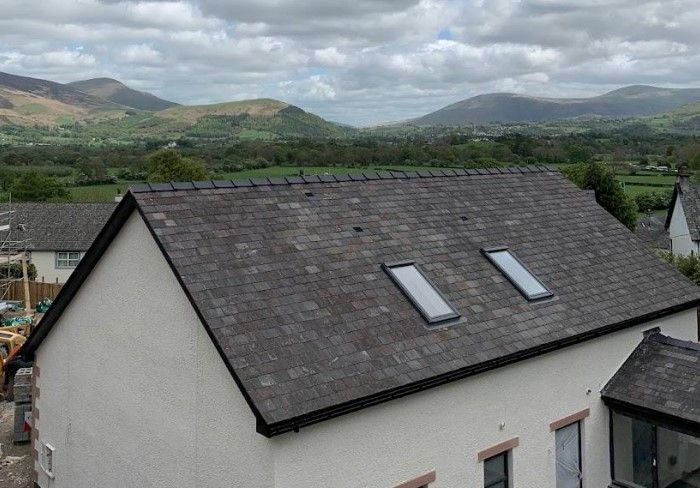
A Penrith business has won a landmark planning battle about the use of second hand Welsh slate on Lake District housing developments.
A national planning inspector has found in favour of Atkinson Builders Ltd after it challenged a decision taken by the Lake District National Park Authority.
National park planning committee members had insisted that the firm use “locally mined” Cumbrian slate on its Hopegill Gardens development at Braithwaite, near Keswick.
But instead, the developers used locally reclaimed Welsh slate after roofers faced difficulties in the supply of the Lakeland variety.
The company also argued that Welsh slate was a common feature on local roofs. A government-appointed planning inspector has now upheld the firm’s appeal.
It means that it is no longer required to take off the Welsh slate tiles from the housebuilding project, which has reached the finals of a national award.
Bradley Atkinson, for the company, said: “The Planning Inspectorate’s decision is an important statement and sets a precedent that Welsh slate does not have a harmful effect on the character and appearance of the dwellings or the surrounding areas of Braithwaite and Keswick.
“We are pleased that a commonsense approach has been taken.
“Welsh slate is a high-quality material that is highly prevalent throughout the Lake District, particularly Keswick and the surrounding areas.”
The type of slate used on Lake District buildings has been a bone of contention at times between developers and national park planners.
Developers say they face higher costs for Lakeland slate and a shortage of supply, while the national park is required to guard “local distinctiveness” and encourage the use of high quality locally-mined materials.
The LDNPA said the most common roof slates in use across the Lake District for new and old buildings are Westmorland green slate and blue grey slate.
The development at Braithwaite was overtaken by events with both Covid and then roofers finding that the supply and availability of “good quality or reclaimed Westmorland Green slate” was in short supply with long lead times.
Inspector M. J. Francis said in his findings: “Whilst the use of local slate can reinforce local distinctiveness, character and a sense of place, Welsh slate is not un-typical in the Lake District and there are many examples and areas where it has been frequently used.
“The proposal is a modern housing development on the edge of the settlement.
“It does not front any of the main roads through it but is set back on a sloping site which is not highly visible. The use of Welsh slate here, particularly in the context of the buildings around it, does not harm the character and appearance of the area.”
Atkinson’s was granted planning permission to build the homes back in September 2021, on condition local slate was used.
It is understood that a sharp-eyed member of the public blew the whistle to planning enforcement at the LDNPA to say Welsh slate had been used.








